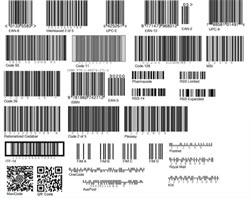There’s a wide number of barcode types (or symbologies), coded in different ways and with different purposes: Code128, EAN, UPC, Plessey, ITF-14, Code39… For a beginner it can be easy to get lost. So how to choose the right barcode for your needs?
Barcode types: choosing the right barcode for your needs

Below we have collected and explained the most popular barcode types (linear barcodes, 2d barcodes, and numeric-only ones) to help you understand which you should adopt: it depends on general factors like your industry, data or product; so it won’t be difficult after all. And once you have chosen, you’ll need a barcode software to create and print it: among the best applications we recommend LabelJoy, Label Maker and LabelRight.
Codabar: an old symbology elaborated in 1972, generally used in library databases.
Code 11: a barcode used especially in telecommunications.
Code 39: a partial alpha-numeric barcode, used for general purposes all over the world.
Code 93: a compact barcode similar to Code 39, again usable for various purposes.
Code 128: a high density barcode that can encode all 128 characters of ASCII; it’s very reliable and used mostly in the shipping and packaging industry.
DataMatrix: a 2-d barcode with rectangular symbols, used for different purposes, in food industry in particular.
EAN-13: the European Article Numbering international retail product code; it’s probably the most known barcode worldwide
EAN-8: a shorter and less used version of EAN-13, used for smaller products
ITF-14 (Interleaved 2 of 5): a digits-only barcode symbology used in different industries, especially for items packaging.
JAN: similar to EAN-13 but used in Japan.
Maxicode: a 2-d barcode used by United Parcel Service, though now public domain.
MSI: Variation of the Plessey code commonly used in USA
PDF417: Excellent for encoding large amounts of data
Plessey: one of the first barcode symbologies, today rarely used.
PostNet: used by U.S. Postal Service.
QR Code: the most popular 2-d barcode, widely used to scan with smartphones.
UPC-A: a product code like EAN, used for retail products in North America.
UPC-E: a shorter version of UPC-A, for smaller products in North America.
